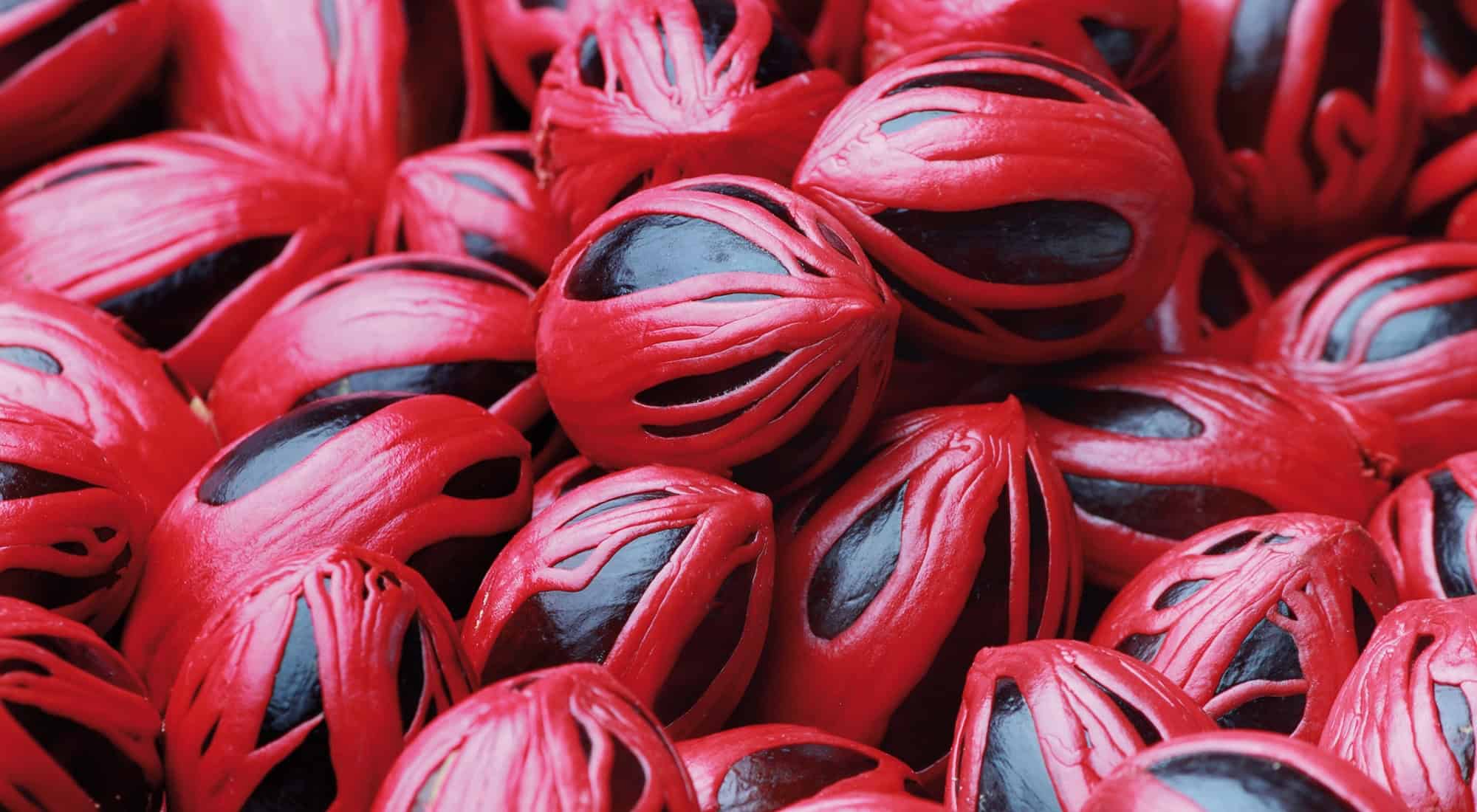One of Grenada’s most important historical dates is 1843, the year that nutmeg was introduced (clandestinely taken from Dutch-occupied Indonesia).
In those days the commodity was nearly as precious as gold and the plantation system dominated the early colonial days, and led Grenada to become known as the ‘Island of Spice’. Before 2004, it was the world’s second largest producer of nutmeg after Indonesia, before Hurricane Ivan destroyed 80% of the nutmeg trees (and 60-70% of cocoa bushes). The nutmeg industry on Grenada cannot be resurrected quickly as it takes at least 10 years for a nutmeg tree to grow big enough to produce fruit. Nevertheless, nutmeg is still an important crop, even though export output has diminished greatly, and today the Grenada Co-operative Nutmeg Association is encouraging a number of rejuvenation projects to restore some of the plantations and helping local people to plant trees on their properties.
The reason that nutmeg does so well on Grenada is that the densely foliaged evergreen tree, Myristica Fragrans, thrives at an elevation of 1500-2500 ft in the rich volcanic soil found in the sheltered valleys of the island. It produces a yellowish egg-shaped pericarp, or fleshy fruit, from which two distinct spices, nutmeg and mace is derived. When ripe, the pericarp splits open, exposing the brilliant scarlet, web-like membrane: the mace, which encircles a dark brown brittle shell. Inside is a single glossy brown, oily seed: the nutmeg.

Nutmeg and mace are similar in aroma and taste but mace is mellower and is often preferred for the bright orange, saffron-like hue it gives to food, while nutmeg is sweeter and more highly aromatic. Culinary uses of both include savoury and sweet dishes. In Grenada, they are added to meat stews, vegetable sauces, egg dishes, fruit salads and pie fillings and are sprinkled liberally in rum punch and other cocktails. Commercially, nutmeg is utilized in the manufacture of perfumes, soaps and shampoos, and is also an ingredient in inhalants and liniments which are used to relieve congestion caused by flu and colds.










